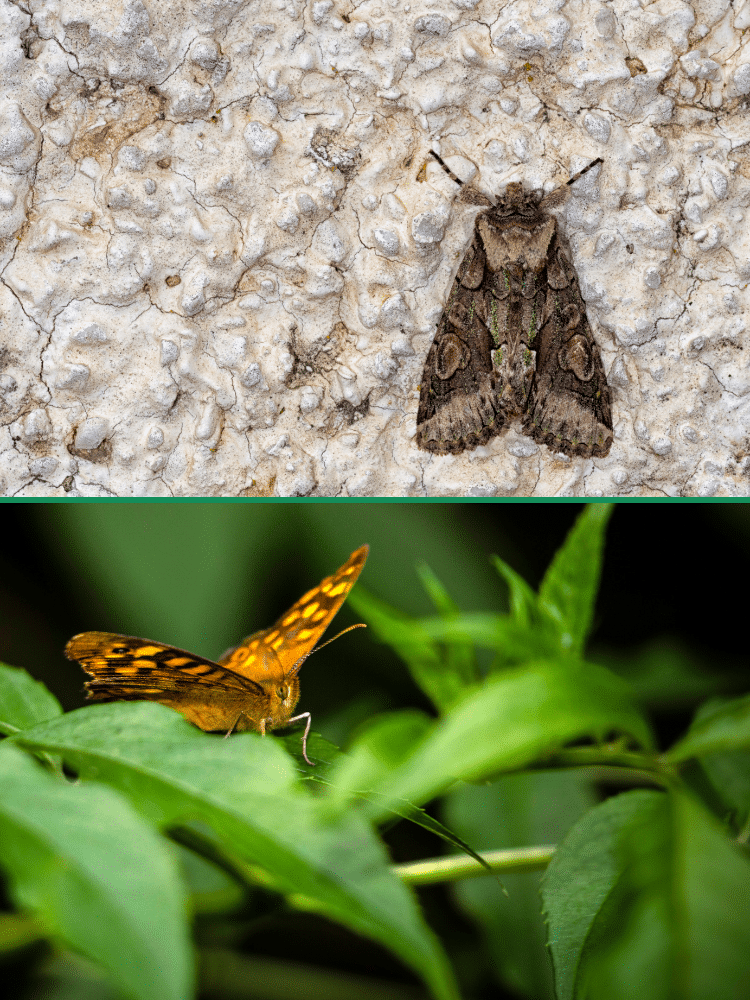When you are hoping to incorporate flowers that offer an abundance of beautiful aroma, jasmine is probably at the top of your list. These flowers are known for their intense sweet scents. But is it just us who like them? Or do butterflies like jasmine too?
Yes, butterflies do like jasmine. Butterflies and other pollinators are drawn to jasmine thanks to its beautiful scent. Jasmine plants rely heavily on pollination; the smell actually lures the pollinators to it. We just get to enjoy the fragrance as a benefit!
What Else Does Jasmine Attract?
Jasmine plants rely on pollination to reproduce. This is why they give off a strong and sweet scent to bring pollinators to them. Not only do butterflies fall under the enticing spell of jasmine, but so do bees, birds, and other flying insects.
Jasmine flowers are white and allow easy access to the nectar for butterflies, bees, and hummingbirds.
Birds will hang out near jasmine plants and eat any “bad” or non-beneficial insects that the jasmine plant may attract.
Jasmine plants once pollinated will grow berries as their version of seed pods. These berries are a favourite of many types of birds.
When the birds carry the berries away, they drop the seeds and then new jasmine plants can grow in new places, filling the entire area with fragrant flowers for the next season.

Mealybugs, aphids and scale insects are all attracted to jasmine. Fortunately, birds love jasmine so much that they will come along and eat these pests up for you.
Which Varieties of Jasmine Attract Butterflies?
Jasmine is a shrub and vine plant with more than 200 subspecies worldwide. The most common places for jasmine to be grown is Eurasia, Oceania, Africa, and other places with warm and humid climates.
The most common reason people are drawn to growing jasmine is the sweet and strong fragrance that jasmine flowers give off.
Some types of jasmine range in colour from white to yellow or bicoloured flowers. Some jasmine even has a bit of pink mixed with white. Butterflies and bees love yellow and white flowers.
Mixed with the fragrance, jasmine is a pollinator super find!
Jasmine is part of the olive family, which is seen when the jasmine flowers turn into a berry. These berries are black and are not usually harvested by humans but foraged by birds.
If you do not want to deal with messy berries or the birds that want to eat them, choose a jasmine plant that flowers slightly less than others. That way you still get the beautiful scent but will have fewer berries to worry about.
You could also quickly prune back the jasmine when you see berries beginning to form. But, in most cases, you’ll want to attract birds!
Why Do Butterflies Like Jasmine?
Butterflies like jasmine because of the nectar located inside the flower. While the fragrance originally attracts the butterfly to the flower, they stay for the food.
Jasmine flowers also offer easy access to the nectar thanks to their shape.
Butterflies prefer flowers that are trumpet or flat-faced in shape. Trumpet-style flowers, like petunias, work well with butterflies’ unique straw-like mouthpiece that they can insert into the flower and suck up the nectar.
Open-face flowers, like sunflowers and asters, allow the butterfly to rest while easily eating from the flower.
Jasmine provides the butterfly and other pollinating insects with easy-to-access nectar thanks to its open-face look. While the flower itself looks like an open-face design, the nectar is kept inside a small trumpet-style body in the centre of the flower.

Jasmine flowers rely heavily on pollination from pollinating insects. Creating a small amount of work to access the nectar will increase the time spent on each flower, thus increasing the likelihood of pollination.
Butterflies also love the colour of jasmine flowers. White and yellow are bright and happy colours that butterflies can see very well from distances. Jasmine is a vine that needs to be grown in full sun, meaning the butterflies can warm their wings while they rest and feed.
Thanks to its long bloom time and multiple blooms a season, jasmine can offer season-long sustenance for butterflies and other pollinators.
Birds like jasmine as they provide berries after they have flowered which birds can forage. Jasmine will also contain insects that birds like to eat such as aphids.
Want to Attract Butterflies to Your Garden?
We’ve Put Together an Ultimate Guide to Attracting Butterflies to Your Garden Including Our Top 11 Plants You NEED to Start Growing Today:
Summary
Jasmine plants are beautiful and easy to care for plants that offer a wide array of benefits for you and butterflies. The flowers’ lovely aroma provides perfume for humans to enjoy and calls pollinating insects to the jasmine.
Jasmine relies heavily on pollination to reproduce, so they are specially designed to be a pollinator’s best friend.
With easy access to sweet and abundant nectar, butterflies can feed to their heart’s content without travelling far between each flower on the vine.
Jasmine has a long bloom season and is a great option when looking for a fragrant and beautiful plant for your pollinator garden.







